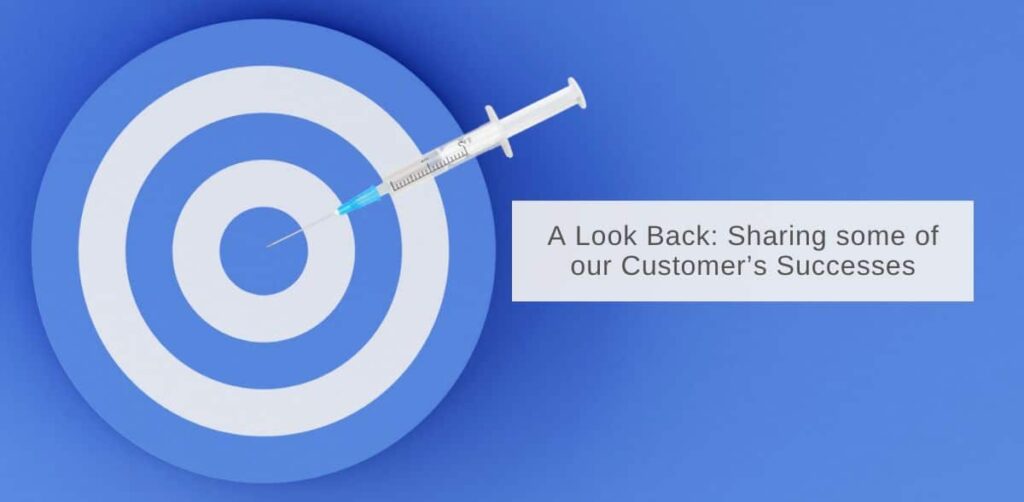Summary
As we head into 2022, we are reflecting on the exciting projects we’ve been involved with over the past few years, and the engrossing conversations we’ve had. To hear full-length versions of these conversations check out our 17 Minutes of Science podcast page.
As an officially licensed CRISPR solutions provider, a lot of the work we do at InVivo Biosystems consists of genome-editing C. elegans and zebrafish to create models of human diseases.
For instance, Dr Daniel Starr, a researcher at University of California Davis, partnered with InVivo Biosystems to create humanized C. elegans models of the potentially disease-causing variants (LMNA and KLC4). Starr explained his decision to reach out to InVivo Biosystems saying that, “IVB can crank the transgenics out faster than we [the Starr & Luxton Labs] can” (Starr, Podcast: 17 Minutes of Science) Furthermore, the InVivo Biosystems team has the expertise to navigate any difficulties which may arise during such a project – in this case the humanized LMNA worm was not viable, so instead, strains which introduced the variants of interest at the endogenous level were generated. You can read Starr’s recent publication utilizing C. elegans to investigate organelle positioning here.
InVivo Biosystems’ ability to assess and deliver what specific projects need is a sentiment that has been echoed by previous customers, such as Dr Sangeetha Iyer and her team at Perlara. Peralara is a biotech company based out of the San Francisco Bay Area whose mission is to, “accelerate the discovery of cures for rare genetic diseases and uncover underlying mechanisms that enable the development of treatments that work across a range of diseases and individuals” (Perlara Website). When Perlara reached out to IVB they were in the opposite position as the Starr Lab: they had already developed a worm model, but it was lethal. Iyer described the process of working with IVB, “with InVivo Biosystems’ help, we were able to model another, a different patient mutation, one that does not have this severe lack of enzyme activity” (Iyer, Podcast: 17 Minutes of Science). As a result, Perlara was able to successfully repurpose the drug epalrestat for the rare disorder PMM2-CDG. You can read more about the PMM2 PerlQuest Here.
Dr. Thomas Caulfield, an Associate Professor of Neuroscience at Mayo, is another one of InVivo Biosystems’ collaborators who is working to develop pharmacological interventions that can prevent and treat diseases. Caulfield utilizes computer models to better understand diseases ranging from COVID-19 to rare diseases. Caufield is a long-time collaborator with InVivo Biosystems, and our work together exemplifies the ‘fail faster’ approach to research: he is able to generate a huge library of potentially beneficial therapeutic compounds which we can then test in a non-mammalian in vivo model before needing to take the time, or spend the money, to invest in a mammalian study.
Dr. Valeria Vásquez, Associate Professor at the University of Tennessee Health Science Center, utilizes the C. elegans model in her research along with mammalian mice models for these reasons, as well as the nematodes’ clean genetic background which makes them amenable to genetic manipulation. Vásquez researches the functional, structural, and molecular mechanisms by which mechanosensitive channels respond to mechanical stimuli and help delineate a general framework for their roles in health and disease. Vásquez began working with C. elegans for her postdoctoral project, reflecting on that time period she said that, “when I was about to go on maternity leave, I was freaking out because I knew my project would be stalled for a few months. (…) So we ordered a bunch of worms from your company because that was the way that we found – or Miriam [Miriam Goodman, Professor of Molecular and Cellular Physiology at Stanford] found – to keep my project going well while I was on maternity leave. So that was really nice” (Vásquez, 17 Minutes of Science). Since returning from maternity leave, Vásquez has continued to use our C. elegans services with great success – she has a new publication slated for January 3rd, which will discuss C. elegans’ PEZO-1 channel and food sensation.
InVivo Biosystems is proud to work with researchers such as these, and can not wait to see what they, and all of the other scientists we work with do next! We wish them and you a happy New Year. Now, onwards!



